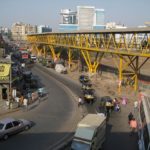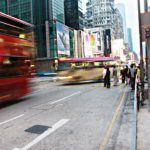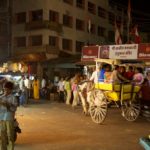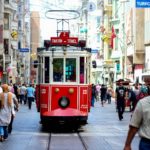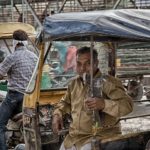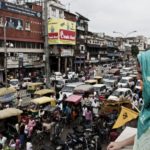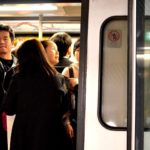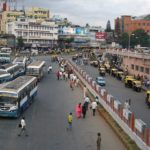Posts tagged with 'Asia'
As the situation stands in India, lack of data connectivity inhibits the success of urban transport systems on two fronts. On one hand, transport operators do not have the baseline information to do their job efficiently. On the other hand, ...

Mumbai, India’s skywalk project was meant to provide better connectivity and accessibility for pedestrians in the city. The project – a joint initiative of the Mumbai Metropolitan Region Development Authority (MMRDA) and the Maharshtra State Road Development Corporation (MSRDC) – ...

While cities are drivers of economic growth, this prosperity does not always come naturally. The fate of a city lies in its ability to balance the positives of dense, connected communities – mobility, accessibility, and innovation chief among them – ...

India alone accounts for about 10% of traffic fatalities worldwide. Fourteen lives are lost every hour, totalling 330 people that die each day on India’s roads. Out of this number, pedestrians comprise 21% of these deaths. In order to combat ...

Editor’s note: A previous version of this article incorrectly stated that the third Global Road Safety Week occurred in April 2014. The third Global Road Safety week is planned for 2015. Already there are 1.2 million traffic-related deaths per year worldwide. ...

With increasing income levels and rapid urbanization, India’s motorized two-wheeler fleet – which includes mopeds, scooters, and motorcycles – continues to expand. As a private transport mode, two-wheelers are particularly popular because of their low costs, fuel economy, maneuverability, and ...

Do you have an idea that could radically change the world, if only you were given the resources to bring it to fruition? Do you see challenges with sustainability, health, or transport in your community and want to solve them ...

Bangalore has rapidly become a megacity. At nearly 10 million people, the city has already doubled the size of its population in just 20 years. This explosive urban growth has been coupled with increased motorization, with now more than 50% ...

Typical transport investment and policy proposals in India often consider few factors, some being connectivity with surrounding areas, land use and socioeconomic impacts, available funding, and the level of support from local stakeholders. All too often, these assessments consistently overlook ...

Growing numbers of privately owned automobiles, pollution, and congestion have helped governments in cities across India realize the need for better mass transport systems. Cities like Delhi are now making substantial investments to improve existing systems and implement new measures. ...

In the past few years, China has made eye-catching achievements in building the world’s largest high-speed rail system, with a total length of over 9000 km (5,600 miles) in operation in 2012. In China, trains travelling at design speeds above ...

Shanghai Tower, designed by transnational architecture design tycoon Gensler, will soon become the third tallest building in the world this year. Once complete, it will proudly join Shanghai’s already crowded skyline, which currently consists of the Oriental Pearl TV Tower, ...

Transport and urban planners spend much of their time thinking about distance to stations, fare pricing, and the key components that make sustainable transport systems work at a basic level, but they sometimes forget the smaller details that make transport ...

Population growth and rapid urbanization are combining to create huge challenges for Indian cities. According to McKinsey, Indian cities are expected to grow from 340 million people in 2008 to a whopping 590 million in 2030. Meeting demand for urban services ...

In developed cities, new mobility options typically only penetrate the transport ecosystem after governing bodies have developed an institutional framework around the new technology. Emerging economies, however, do not always have the regulatory capacity to standardize regulations and create policy ...

Page 6 of 22« First...567...1020...Last »










